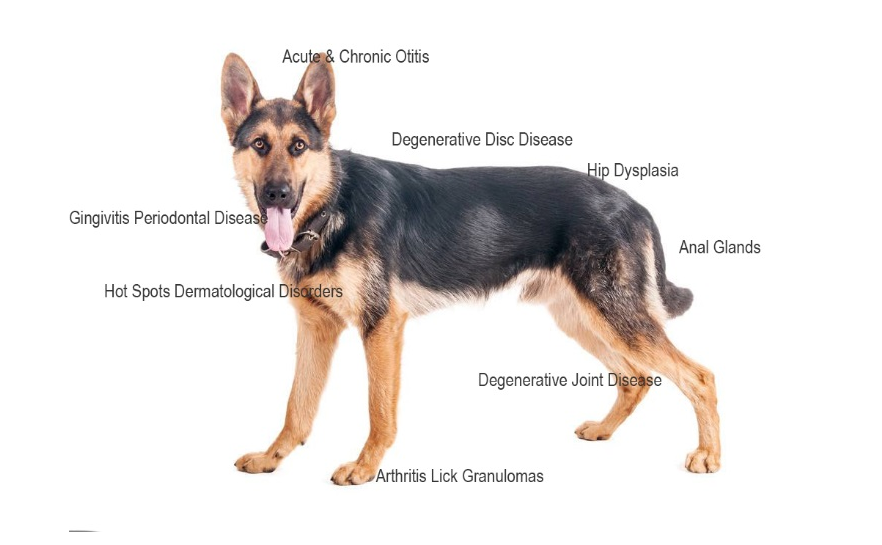With the increased use of lasers in veterinary medicine during the past 20 years, the perception that the medical laser is a “tool in search of an application” is out of date. In recent years, the use of surgical lasers in both large and small animal veterinary practice is significantly increased including both non-contact and contact fiber-directed surgery. For contact fiber-directed surgery, the laser function is like a painless scalpel to cut soft tissue very quickly. By well using tissue vaporization principle, the laser surgical operation will be very precise and it only leaves a smaller scar. The surgery does not affect the beauty of the pets and relieve the pain of pets, improving quality of life (of the animal and its owner). Laser surgery has more advantages such us less bleeding, less pain, less swelling and quick recovery.
Among small animal veterinarians, diode lasers normally are used for numerous procedures including dental applications, oncology, elective procedures (such as spays, neuters, dewclaw removal, etc.) and numerous miscellaneous soft-tissue applications. A rapidly expanding use of the laser technology is in removal of unsightly warts and cysts.
In therapy area, Laser biostimulation have anti-inflammatory, analgesic and cure-promoting effects. By using therappy handpiece, it produces an unfocused beam that stimulates circulation in soft tissue, and relieves joint and muscle pain. The benefits of laser therapy including:
√ powerful anti-inflammatory effect
√ reduction of pain
√ Accelerated Wound Healing and Tissue recovery
√ Immediate improvement of local blood circulation
√ Reduced Fibrous Tissue Formation and oedema
√ Improved Nerve FunctionImmunoregulation
How does a laser help with healing?
Lasers differ from one another in both the wavelength and strength of light that they produce. In medical applications, different wavelengths affect living tissue in different ways. Therapy laser light stimulates the mitochondria within the cells to help tissues heal: scientists call this process “photobiomodulation”. A cascade of beneficial effects then takes place at the cellular level which accelerates blood flow, heals tissue, and reduces pain and decreases inflammation and edema. The laser precipitates the release of endorphins, enhancing nerve cell regeneration and inhibiting the release of neurotransmitters across the receptors that feel pain in the muscles, dulling the perception of pain. It also causes increased angiogenesis, a physiological process through which new blood vessels form. This increases circulation to the inflamed area and allows the body to move fluid away from the affected areas.
How many treatments are required?
The number and frequency of laser treatments recommended depends on several factors, including the objective of laser treatment and the severity of the pet's condition. More severe cases often require a series of treatments to realize the full benefits. Laser therapy may be performed daily or several times a week for the first 1-2 weeks, then - depending on the response of the patient and the objective – the frequency needed may decrease. An acute problem, like a wound, may only require a few visits within a short period of time.
What does a laser therapy session entail?
Treatment with the therapy Laser is non-invasive, requires no anesthesia, and produces no side effects. Occasionally a pet with a chronic pain condition will experience increased soreness the day after blood flow has been stimulated in a painful area; this soreness should subside by the second day, post-treatment. The treatment is completely painless. In fact, for most pets, the experience feels similar to what we humans call massage therapy! We typically see relief and improvement in laser patients within hours of completing a treatment.
Post time: May-24-2022

